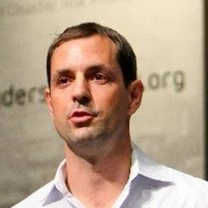
It’s a simple yet essential idea: war and disaster are linked, and these links must be examined to improve the lives of millions of people around the world.
Alarmingly, the total number of disaster events – and the economic losses associated with those events – keep increasing. This trend has been driven by population growth, urbanization, and climate change, leading to increasing economic losses of $150-$200 billion each year, up from $50 billion in the 1980s. But here is another piece of information: more than half of people impacted by natural hazards lived in fragile or conflict-affected states.
Kosovo and Bosnia and Herzegovina in the Balkans, provide a good example: extreme weather events in 2012, 2014 and 2015 caused loss of life and massive economic damage. The 2014 floods in Bosnia and Herzegovina killed 20, displaced 90,000 and are estimated to have cost the country 15% of its GDP in damages and lost output. Conflict can increase vulnerability to natural disasters as weakened state structures are less prepared for response and recovery, communities are less resilient and people displaced by conflict and violence are more exposed to disaster risk.
At the same time, disasters can exacerbate conflict and fragility by damaging people’s livelihoods and increase displacement, placing more stress on already weak governance systems, and fueling grievances through inequitable or inadequate disaster response or coping mechanisms. In 2003, a cease-fire was brokered between the Sri Lankan government and the Tamil separatist movement which had been fighting for three decades. However, the 2004 tsunami, which disproportionately impacted the Tamil population, destabilized the country and contributed to renewed conflict in 2005.
Mutual mistrust and the unfair distribution of disaster funds, as well as social disruptions such as the orphaning of hundreds of Tamil children who were then exploited and recruited by the Tamil separatist groups, are pointed to as contributors to a renewal of fighting.
These connections and ways to address them will be explored in a special edition of the Resilience Dialogue series, organized by GFDRR at the World Bank’s 2016 Fragility Forum. The event, titled ‘Fragility, Conflict, and Disaster Risk: Connecting the Dots,’ will bring together voices from development experts and civil society including Nancy Lindborg, President of the United States Institute of Peace, and Sri Mulyani Indrawati, the Managing Director and Chief Operating Officer of the World Bank.
GFDRR, together with its development partners, is currently engaged in a process to share lessons, and develop guidance and tools that acknowledge and respond to the dynamic relationship between conflict, fragility, and disasters. Common themes include enhancing coordination between the development and peacebuilding disciplines and practitioners and improving analytical capacity. At the same time, the development community is adapting the tools and methodologies that have been developed for disaster risk management for use in conflict-affected areas.
The goal is to strengthen our ability to inform interventions in fragile contexts, conflict analysis and recovery, and resilience-building in disaster prone areas.
GFDRR recently supported a Damage Needs Assessment of seven sectors in six Syrian cities which suggests the damage in six Syrian cities could reach a staggering $4.5 billion , with housing the greatest area of concern. Over a million people are cut off from water due to infrastructure damage inflicted by air raids. Recently we’ve also completed assessments in Syria, Iraq, the Ukraine, Lebanon, and the West Bank and Gaza, and there are ongoing assessments for Yemen and the Boko Haram-affected areas of Nigeria. On March 1, we invite you to join us as we connect the dots between conflict and disaster in this special event to address this pressing global issue. We hope you can make it.


Join the Conversation